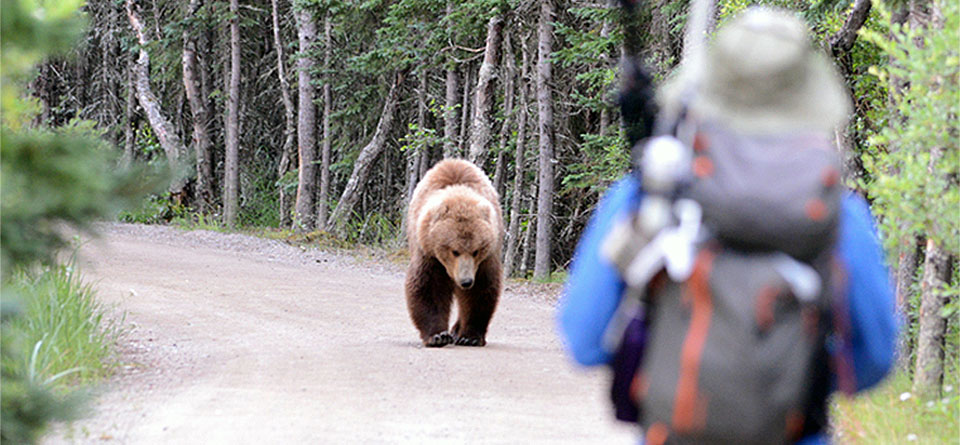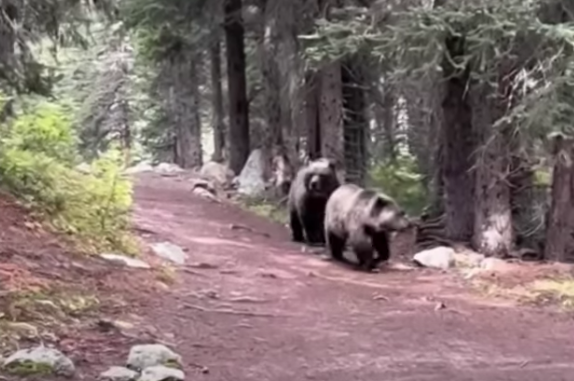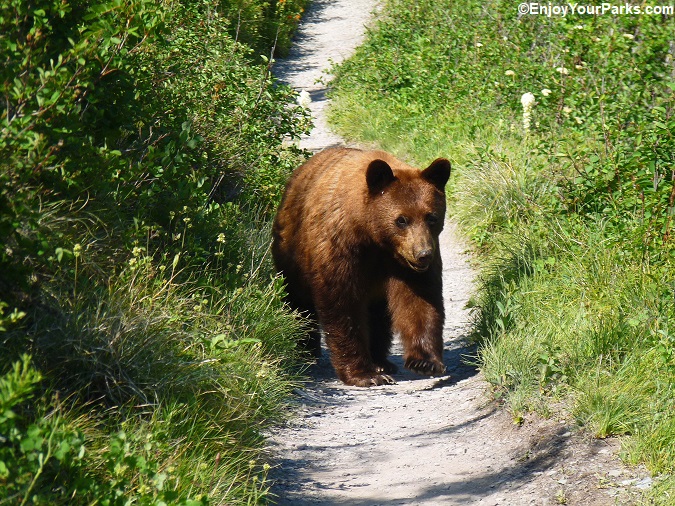2 Grizzly Bears Stalk a Group of Hikers in Canada, They’re Just Using the Trail

It turns out that grizzlies, much like people or other critters, like to take the easiest path.
So if you see a bear on a trail behind you, don’t just jump to the conclusion that it’s trying to hunt you down as fresh meat, some Wyoming grizzly experts said.
And hence, a recent video depicting tourists in Canada terrified over two grizzlies “following” them was probably just a misinterpretation of the situation, Dan Thompson and Chuck Neal told Cowboy State Daily after viewing the video. Why Not Take The Easy Path?

The bears probably just recognized the trail as an easier route, said Thompson, a large carnivore specialist with the Wyoming Game and Fish Department. And the grizzlies — which appear to be a mother and large cub — were actually patient with the skittish tourists on that trail in Canada’s Banff National Park.
“Looks to me like the bears just wanted to walk down that trail and were fairly patiently waiting for the people to stop videoing and taking photos so they could go about their business,” he said. “We know bears use trails, assuming these bears are used to seeing people, and it just happened there was a throng of people on the same trail the bears wanted to use to get to their destination,” he added.
Neal, a retired federal ecologist and seasoned traveler and grizzly country, agreed that the bears were probably just tried of busting through the brush and wanted to take an easier route. “The first thought I had was that these bears are definitely not stalking the hikers,” he said.

“They are just using the trail as the easy way to get where they want to go and they found that the trail was cluttered up with people.” Too Used To People?
Thompson and Neal noted that the bears in the Banff trail video do seem unusually acclimated to people. “These bears bumbling along a trail didn’t seem keyed in on the people or stalking them. It’s the same video over and over on a loop, so unless something else happened it was a few bears on a trail used to seeing people trying to get to their point B,” Thompson said.
Neal said the section of Banff park that the video was apparently taken in gets crowded, which isn’t a good situation when it comes to grizzlies.

“The second thought (after watching the video) is that these bears are way too accustomed to people,” Neal said. “It is a problem in Banff because the park sits on the edge of Calgary, which has over a million people who many go to Banff for their outdoor recreation, and most are not knowledgeable about bears.” Fatal Banff Mauling Was A Different MatterBanff was recently in the headlines again after a grizzly killed a couple and their dog in a remote section of the park, and then the bear was subsequently shot and killed by wildlife agents.
That appears to have been a completely different situation than what’s depicted in the trail video. The victims, Doug Inglis and his longtime partner Jenny Gusse, both 62, were highly experienced backcountry experts. And that attack happened in an area of the park that is so remote, it took a search and rescue crew hours to get there.
Inglis, Gusse and their dog were dead long before rescuers got there, so it’s impossible to surmise exactly what happened, although an empty can of bear spray was found at the scene. Actual Stalking Is Extremely RareIn situations like the one in the video when a bear just wants to use the trail, Neal recommends being respectful and giving the grizzly its space.

“I have had bears following me on mountain trails. They knew I was in front of them and I knew that they were behind me,” he said. “I never contested the trail with them. I got off the trail uphill a way and watched them walk by me, sometimes after standing up and looking at me — while I talked to them.”
Grizzlies almost never deliberately stalk people as prey, Thompson said. But if a bear seems fixated, is acting aggressive or predatory, then be prepared to defend yourself. Nearly all bear encounters are “defensive,” or a situation in which a grizzly is trying to defend its cubs or a food stash. In that situation, it’s important for people to demonstrate to the bear that they are not a threat, Thompson said.
That might include backing away slowly while talking to the bear in a calm voice. Reiterating that some parts of Banff are getting too crowded, Neal said that if the situation in the video had turned ugly, a collective blast of bear spray would have saved the day.

“It would seem from what little that I saw that the best approach for these hikers would be to continue talking and walking in a normal manner but keep their bear spray ready,” he said. “When they got to some open country to get off the trail with their bear spray handy and let the bears have the trail. If the bears then showed aggression the entire group should use their spray.”









